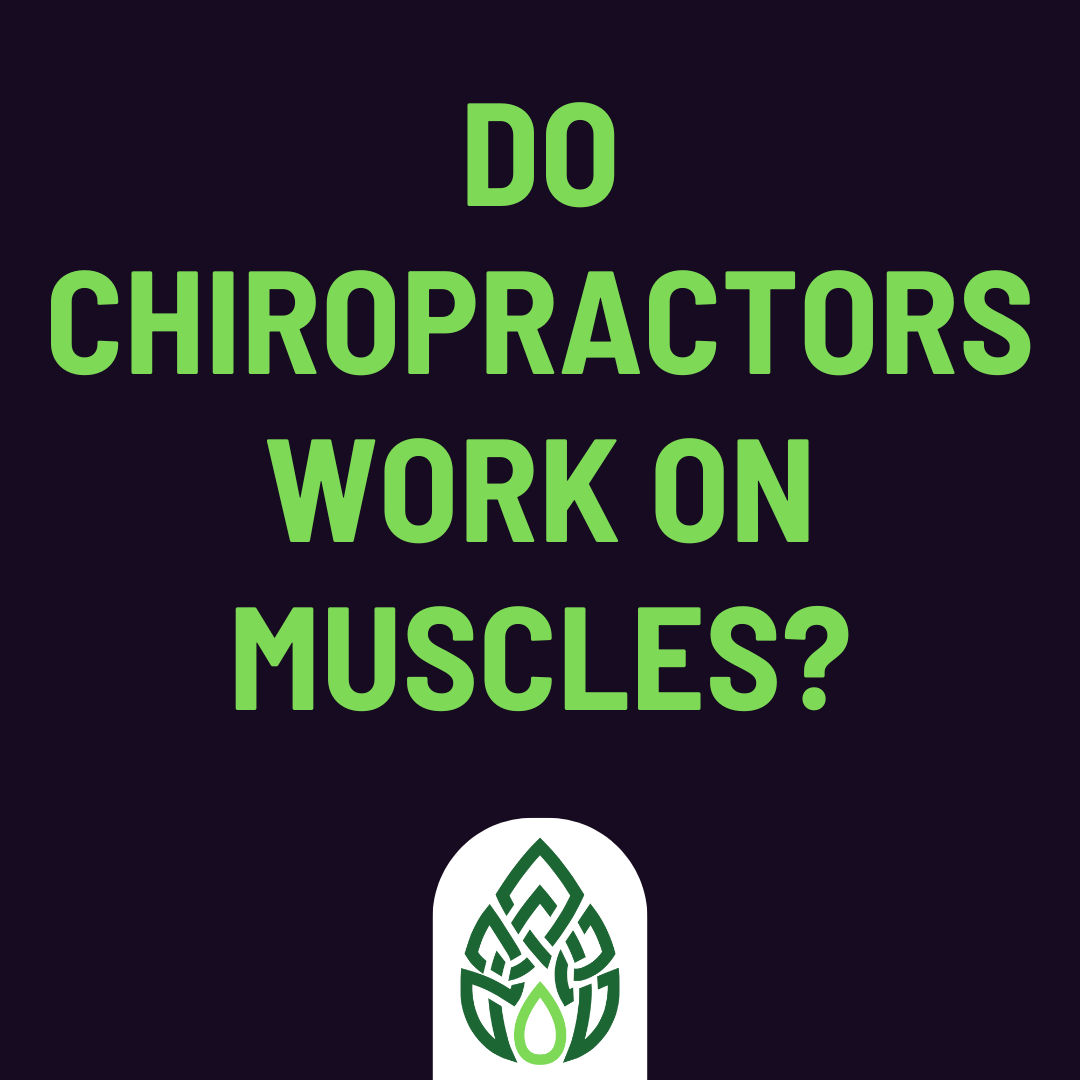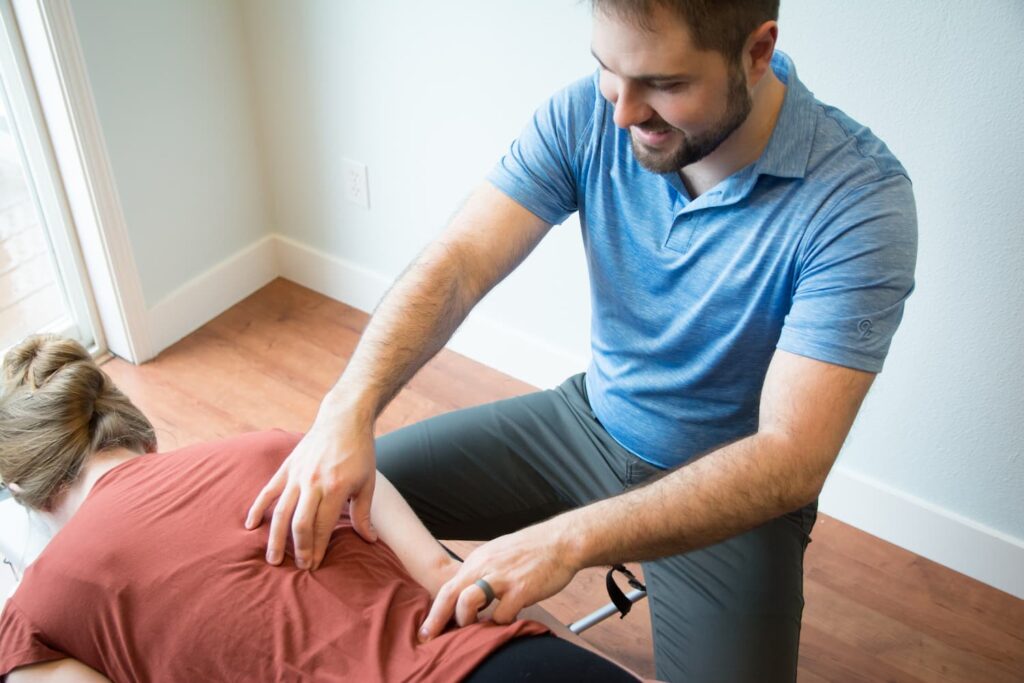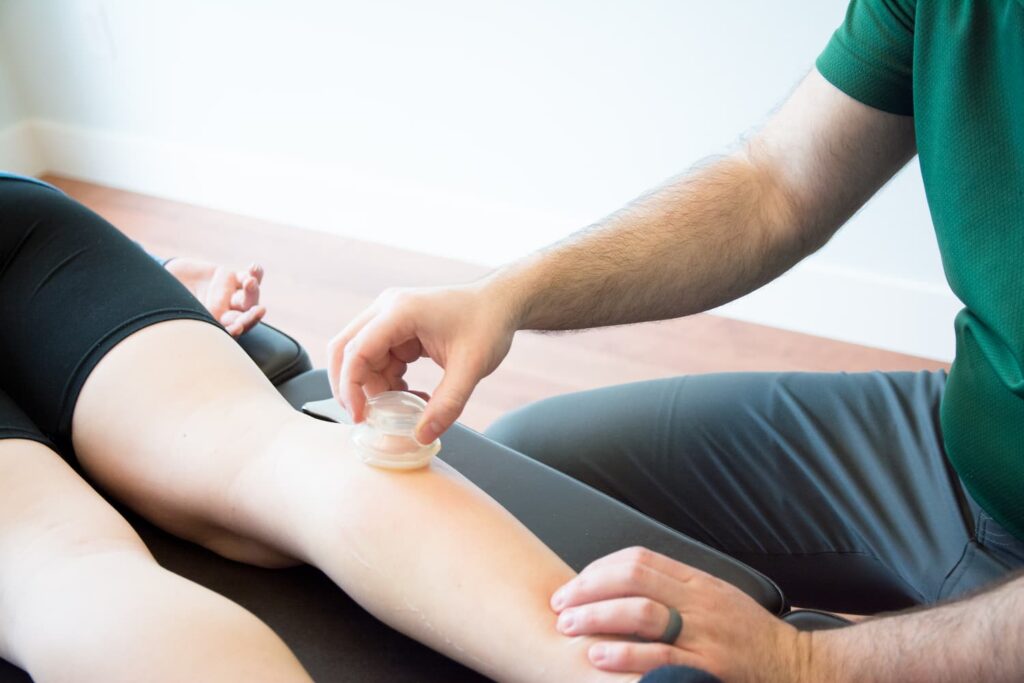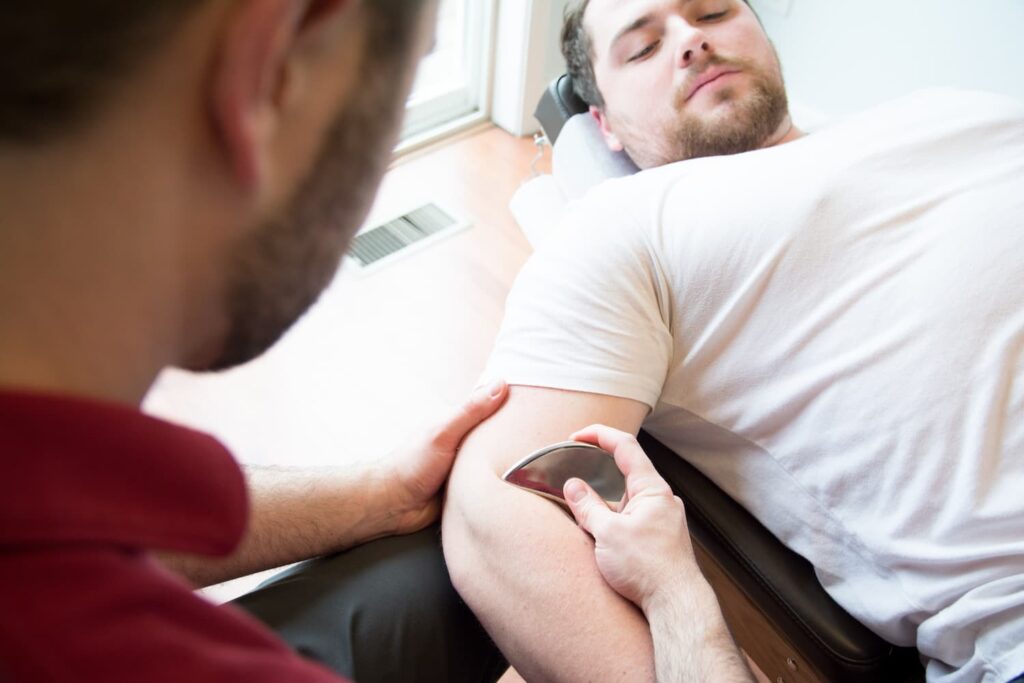Do Chiropractors Work on Muscles?

When people think of chiropractors, they usually picture a physician cracking someone’s neck or back to put them “back in alignment.”
While it is true that most chiropractors address the various facets of spinal joint dysfunction, our scope of practice encompasses many aspects of healthcare that most would more readily attribute to a medical doctor, massage therapist, naturopathic doctor, or physical therapist.
I won’t come close to covering all the different treatments a chiropractor can offer their patients, but hopefully by the end you’ll have a better answer to a question I hear every week: do chiropractors work on muscles?
Are chiropractors trained to work on muscles?
The short answer is yes, chiropractors are absolutely trained and qualified to work with muscles.
At the chiro school I attended (University of Western States) and many other chiro schools, all Doctor of Chiropractic students had to pass multiple anatomy and physiology courses.
One of the most in-depth was an anatomy lab, where similar to traditional medical schools, we dissected entire cadavers from head to toe.
Additionally, we learned about the various tissue types that make up the musculoskeletal system, and how to provide drug-free treatments for those tissues.
It’s a fact that spinal and extremity joint manipulations hold much better and for much longer when paired with some type of muscle work. This is why many chiros also complete additional courses or certifications in muscle care after graduating.
I’ll discuss in detail some of the techniques I use in my own clinic, along with some of the other most common applications of muscle work in the chiropractic world.
A word on scope of practice
It is important to understand that the scope of practice, or allowed treatments, for chiropractors are decided by their state chiropractic board.
For example, as of the time of this writing, a chiro licensed in Idaho is allowed to use ultrasound on their patients for muscle care, but a chiro licensed in Washington State is not.
Because of this variation in scope across states, chiropractors still receive instruction and even hands-on training in school for most of these modalities, even if they aren’t able to practice them once fully licensed.
Now you know that when selecting a chiropractor to see for muscle care, some of the treatments we’ll discuss here may not be available in your state.
If you have questions on what treatments are available, you can check with a chiropractor’s office or even with your state board of chiropractic.
What kind of muscle treatments do chiropractors offer?
Chiropractic muscle work is generally referred to as soft tissue manipulation.
It encompasses any treatment where the modality specifically targets the muscles, their attachment points, and their fascial connections.
These therapies include but are not limited to:
Muscle Activation

Muscle activation is a topic I’ve covered a few times in more specific detail, so I’ll just summarize the main highlights in today’s post, and you can refer to our other blogs for more information if you still have questions.
This therapy seeks to ensure that all the muscles of the body are strongly connected to the brain and can function at their optimal levels.
The doc uses targeted, muscle-specific muscle testing to sort all the muscles into two categories: on and off.
That list of muscles provides a roadmap for treatment.
“On” or active muscles generally don’t need muscle activation. They tend to respond well to exercise, though they can still have minor issues. Those issues can be addressed with any of the techniques that are covered below.
The “off” muscles, however, need more attention before they will fully respond to other modalities.
To treat, the doc manually stimulates pressure points in the target muscle. This 5-10 minute treatment refreshes its connection with the brain, which in turn restores the muscle’s strength and function.
Each muscle is treated step by step, one at a time until the desired goals are achieved.
The doc then follows the symptoms or movement chain throughout the problem areas until all the off muscles are on again and back to full strength.
Muscle activation is a great place to start when your main complaints are muscle weakness or pain.
Instrument-Assisted Soft Tissue Manipulation (IASTM)
Instrument-assisted soft tissue manipulation (IASTM) is a broad category of soft tissue work that includes cupping and Graston-style scraping treatments.
Cupping has been around for thousands of years, as documented in early Egyptian and Chinese medicine.

It utilizes glass, plastic, or silicone cups to create a vacuum on the skin above an injured or congested area.
The suction increases blood flow, stimulates healing, breaks down scar tissue, and decreases pain and swelling.
Scraping produces results similar to cupping, but does so through sharp pressure instead of suction.

A metal, plastic, or stone tool with a defined edge is scraped through problematic areas. Scraping in some directions is smooth and painless, while others can be intense and feel crunchy or gristly. It can be an especially helpful treatment following a surgery or other injury to muscle, as it speeds the remodeling phase of healing, resulting in a smaller, stronger scar.
Dry Needling and Trigger Point Therapy
Have you ever noticed knots that are exceptionally tight or even painful to the touch in the muscles around your shoulders? These knots are called trigger points and can sometimes refer pain to other places in the body, or even cause headaches. I share the shoulder example because most people have noticed a knot in their shoulders, but they can occur in any muscle.
Both dry needling and trigger point therapy are excellent at resolving these knots.
Dry needling inserts very fine needles, just like acupuncture needles, in the center of a knot. The initial poke of the needle stimulates the muscle fibers to contract then relax. Further twisting or winding the needle in place helps reduce tension and pain.
Trigger point therapy applies direct pressure on a knot to force the muscle fibers to slowly release and relax. The consistent pressure makes the knot melt and disappear.
Both techniques restore the proper length and tension to the previously tight muscle. Each also usually resolves pain and releases chemical build up that often has been caught up and stored in knots.
Similar to cupping and scraping, dry needling and trigger point therapy also increase blood flow, allowing any lingering injuries or weak points in the muscle to heal and get stronger and more resilient.
Massage
Massage is of course a very well-known therapy!
Most states allow chiropractors to perform most massage techniques themselves and they will either use their hands, or tools like massage guns for their patients. Many chiropractors employ Licensed Massage Therapists to treat their patients and train them in any specific techniques they want used in their care.
Massage guns typically vibrate or have an oscillating head that helps loosen tight muscles and restore blood flow to restricted areas.
There are many different types of massage practiced by LMTs, and each type excels at resolving specific problems. Not all types of massage are indicated for every issue.
This could be an entire blog post all on its own, so I’ll stop at this general summary for now and dive deeper into the different techniques in a future post.
Physician-Assisted Stretching
Stretching is gaining in popularity!
Most people have learned how to stretch their shoulders or their quads, but a doctor who is already familiar with your exact case can show you specific stretches that target your main problem areas.
Additionally, physicians can even help with stretches using specific methods including:
- PIR (Post-Isometric Relaxation)
- CRAC (Contract-relax-antagonist-contract)
- ART (Active Release Technique)
- and other, brand-specific stretching techniques
Each method overcomes the body’s natural neurologic reflexes to get faster, longer lasting progress.
Additionally, there are some practitioners that do only stretching. An assisted full-body stretch every once in a while can positively influence flexibility and ease of motion.
Other Machine Modalities
There are a huge variety of modalities provided by various machines. That much variety of course brings a wide range of treatment goals as well.
To speed healing, stimulate cellular metabolism, and increase cell turnover:
- Ultrasound
- Pulsed Electromagnetic Frequencies (PEMF)
- Shockwave Therapy
To help manage pain, reconnect nerve damage from stroke or other brain-related issues, and strengthen weak muscles:
- TENS
- ICF
- Russian Stimulation or Neuromuscular Electrical Stimulation (NMES)
To speed up healing injured muscles, the various forms of light therapy:
- Day lamps
- Ultraviolet (UV) Lights
- Lasers of various frequencies
So, do chiropractors work on muscles?
Yes, many chiropractors work on muscles!
The modalities and techniques discussed above only scratch the surface of their impact.
Chiropractic care of the joints paired with in-depth soft tissue treatments offer a drug-free, holistic approach to resolving musculoskeletal issues.
If you find yourself dealing with a muscle problem, schedule a Discovery Call! The green button below will take you to our online booking site Jane to find a time that would work best for you.
I’m always happy to help you find the type of treatment you need to start down the road to recovery.